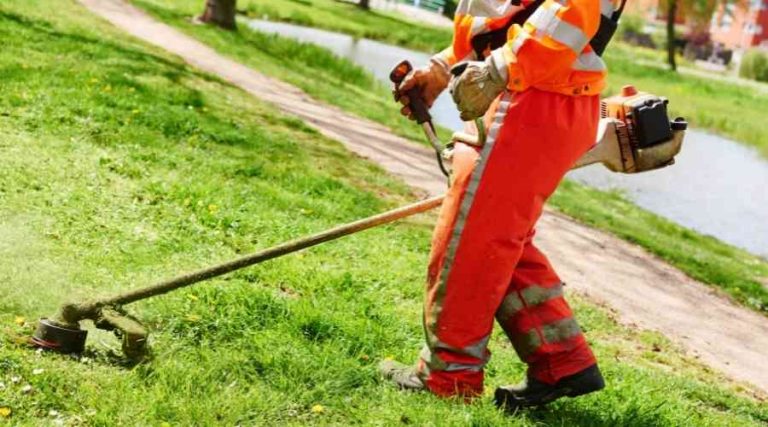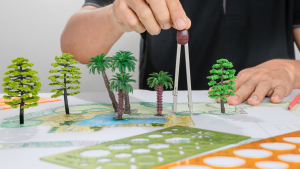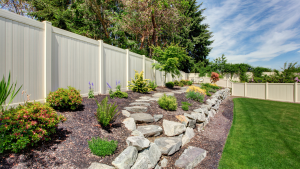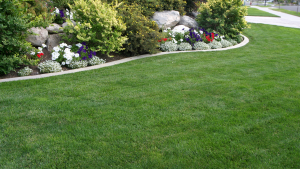To get ready for the next Ida, you don’t have to leave yourself vulnerable to the vagaries of hurricane season. You may reduce the damage to your property in Baton Rouge caused by a hurricane by taking preventative measures. This will give you peace of mind.
There is more to be done in preparation for an approaching storm than simply stocking up on groceries and sandbags. If you live in Louisiana and want to make your home more resistant to damage caused by wind and water, consider implementing some of these nine suggestions for hurricane-proof landscaping. You will have less debris to clear after the storm if you do it this way, and you will be able to offer your next-door neighbor some assistance.
1. Establish some trees that are resistant to wind.
A falling tree presents the greatest danger to both you and your property, second only to flooding in terms of severity. A wind speed of 150 miles per hour, which was witnessed during Hurricane Ida in 2021, can rip a tree out of the ground as easily as it might pull a weed out of the ground.
Does this imply that you have to remove each and every tree from your yard? No. Trees are crucial to a healthy ecology for a number of reasons, including the fact that they provide shade, act as nesting sites, and reduce the amount of stormwater runoff. It is possible to lessen the likelihood that the trees you plant will be destroyed by a hurricane by exercising caution when selecting which trees to plant and how to plant them.
What characteristics confer wind resistance to a tree species? Keep an eye out for the following qualities:
- Native
- Deep, radical roots
- Slow-growing
- The low point of gravity center
- leaves that fall from the tree each year and have a delicate feel
The Louisiana State University has identified the following species of trees as being particularly resistant to the wind:
- Cypress bald spot
- Live oak
- Sabal palm
- Windmill palm
- Steel and oak
- The Shumard oak and
- The Winged elm
Trees to avoid:
- Pecans
- Pines
- Cedars of Lebanon
- Ornamental pears
- Willows
- Silver maples
- Box elders
- Cottonwoods
- Hickories
- Water oaks
Cost: The price of a tree can range anywhere from twenty dollars to more than three thousand dollars, depending on its size. If money is tight, you should stick to planting smaller trees or saplings.
2. Plan Tree Placement
You’ve already selected the trees that can withstand strong winds; the next step is to figure out where you’re going to put them. The first thing you should do is eliminate any potential hiding spots that are close to your property or any electricity lines. Choose a modest tree to plant next to a power line, such as dogwood, crepe myrtle, or wax myrtle, if you have a strong desire to fulfill this desire.
Your planting location should have a deep water table and at least three feet of soil depth; however, you should use caution if you are planting near a sidewalk. Before planting any huge tree, follow these methods to measure the distance to the water table and find out where the water table is located:
- Dig a few holes 2-3 feet deep.
- You may have to wait up to four hours for the water to emerge. In the event that there is no water, you are allowed to grow a sizable tree.
- If there is water present, you should determine the distance that separates the top of the water from the top of the soil. Pick a dwarf tree if the circumference is less than 18 inches. If it is more than 18 inches, you should select a tree that is either tiny or medium in size.
The ability of a tree to survive harsh weather is also impacted by the state of the soil around it. Be sure to aerate your lawn on an annual basis so that you can break up the soil and create a more favorable environment for the growth of new plants.
Our last piece of guidance concerning the positioning of trees is to cluster them in order to provide protection from strong winds. According to the findings of a study conducted by the University of Florida, simply planting trees in groups can enhance their odds of surviving a hurricane by 10 percent.
Cost: There is no charge associated with selecting a location for a new tree. The cost of relocating an existing tree might range anywhere from $150 to $880 per tree.
3. Choose Salt-Tolerant Plants
Have you ever heard of autos that are located hundreds of miles inland decaying after a hurricane? Salt spray during normal weather conditions has the potential to corrode metal up to 10 miles inland; during a storm, this range is much further extended. After a tropical storm hits Baton Rouge, the plants in your backyard are in danger of salt damage since plants are considerably more sensitive to the effects of the salt than metal structures are.
An inflow of salt causes plants to dry up, hinders their roots from receiving water, and prevents them from absorbing nutrients in the appropriate manner. To put it succinctly, it may mean the end for your cherished garden bed.
When you are planning to give your garden a facelift, you might want to think about replanting it with some hardy plants that can withstand the effects of salt.
Salt-tolerant plants for Louisiana
These plants can tolerate high levels of salt and are native to the area. The fact that native plants have already adapted to their habitats gives them an advantage in terms of resistance.
shrubs that can handle salt:
- Inkberry
- Wax myrtle
- Elderberry
- Bayberry in the south
Salt-tolerant grasses:
- Gulf bluestem
- Coastal dropseed
- Cordgrass in a salt meadow
- St. Augustinegrass
Salt-tolerant vines:
- Trumpet creeper
- Virginia creeper
- Honeysuckle in coral
- Passion Flower
Flowers that can handle salt:
- Camphor daisy
- Seaside goldenrod
- Beach morning glory
- Blazing star Swamp rose
- Mallow rose
Cost: Having a professional put in a flower bed costs between $500 and $2,000.
4. Ensure that Plants Are Regularly Clipped and Trimmed
The first step is to select the plants that you like, but giving them proper care is just as essential. When was the last time you went outside with a set of shears and trimmed the hedges on your property? Weak branches provide excellent targets for high winds, and the last thing you want is for a rogue branch to shatter the window of your automobile.
In general, healthy plants have a considerably better chance of surviving a hurricane, and maintaining their health by regular trimming will ensure that they remain in good shape. After you are finished, you should clean up any debris in order to keep the airflow going and avoid spreading sickness.
It is important to keep in mind that the prevention of storm damage requires care for plants throughout the entire year. Inspect the plant on a regular basis for any symptoms of disease or poor health, such as discoloration, dead leaves, or insects. Keep a close eye on the trees in particular because even unseen damage can result in a weakened tree.
Cost: You won’t have to spend any money on maintaining your bushes and trees if you have the proper equipment for cutting back and shaping them. The price of professional trimming services ranges from $6 to $15 per bush to $300 to $600 for each large tree.
5. Assess Drainage
With a hurricane, you have to worry about more than just strong winds. Heavy rain that never stops can do a lot of damage to your house and yard. To avoid damage from stormwater, you need to check your drainage systems.
You want to make sure that water can flow freely to the nearest storm drain. This means clearing the path of any plants, fences, or hardscaping, like gazebos or fire pits, that could get in the way.
If your yard has a bad slope, you may need to do the following:
- A rain garden is a collection of plants set up on a low slope that help the soil absorb water (and filter it for free).
- French drains are trenches filled with gravel that move water to a place where it can flow away.
- A dry well is a deep hole filled with rocks that are used at the end of French drains or where downspouts end.
Lastly, make sure your gutters and downspouts are in good shape. They protect your roof, foundation, and siding from water damage after it rains hard, but they can’t do that if they’re full of dirt and other junk. Two times a year, preferably in the fall and spring, they should be cleaned.
Cost: Having a professional install a French drain costs between $1,000 and $4,500, depending on its size and how close it is to the ground. Gutter cleaning costs between $118 and $224, or more if your house has more than one story.
6. Secure Fencing
Start thinking about hurricane-proof landscaping by reducing the damage that could be caused by wind. When the wind blows through a fence with holes, like a slatted fence or a chain-link fence, it doesn’t cause any resistance.
Solid fencing, on the other hand, doesn’t let the wind pass through, so it hits hard and is likely to cause damage. If you want to keep your solid fence, put brackets on the fence posts to make them stronger. You can also take out a single fence panel at each end to let small pockets of wind through.
Material things also matter. Wood fences don’t last nearly as long as metal fences. Steel and wrought iron can take a beating, but a heavy branch or tree can easily break the wood. Vinyl fencing is also salt-resistant and waterproof, but it’s not as strong as metal.
Tip: If you are putting up a new fence, you might want to hire someone who specializes in hurricane-proof fencing. They will come up with the best solution for you that is safe, private, and beautiful.
Cost: A fence will cost a Baton Rouge homeowner between $7 and $50 per linear foot. Chain-link fencing, also called “cyclone fences,” costs anywhere from $5 to $35 per linear foot.
7. Put Down Soft Mulch
Mulch keeps plants healthy, but in a hurricane, the wrong kind can cause damage. Hard mulches like river rock, pea gravel, and landscape glass should be replaced. These will be blown by strong hurricane winds toward things like your car, windows, and siding.
Use soft mulches instead, such as wood chips, shredded leaves, pine needles, rubber nuggets, and shredded bark. They might still cause a few scrapes, but they won’t be as bad as they could be.
Cost: Shredded bark mulch costs $3 per 2 cubic feet, or you can use free materials you already have, such as newspaper and grass clippings.
8. Build a Wall to Hold Back the Earth
A retaining wall is a short wall that keeps the ground in place behind it. It can keep water from getting to your home’s foundation if it floods during a hurricane. Retaining walls are usually made of stone or concrete and can stay wet for a long time without getting damaged.
In addition to stopping the flow of water, they also help keep your landscape from eroding all year long. If your yard has a slope, build a retaining wall to break up the slope and slow water so it can soak into the ground instead of running over the surface and carrying dirt with it.
Cost: The price of a retaining wall can range from $20 to $50 per square foot, depending on the material used.
9. Get Rid of and Secure Storm Risks
In a hurricane, things that look like harmless decorations can be used as weapons. Before a hurricane comes, you should put away many of your yard’s finishing touches in a safe place. If a storm is coming, you should move your outdoor dishes, garden benches, toys, and bikes to a safe place.
Turn on its side any structure that you can’t bring inside but can still be moved, like a trellis or playground set. Group them together to make it less likely that they will roll away. Use eyebolts and concrete footings to tie down other structures, like sheds, to the ground.
Cost: You can do this for free on your own, or you can pay a professional between $150 and $400 to do it for you.
Why Safety During Hurricanes is Important in Baton Rouge
Nothing is free, and the rich cultural traditions and lively community we enjoy in Baton Rouge aren’t free because hurricanes are always a threat. From Hurricane Katrina’s unforgettable path of destruction to Hurricane Ida’s near-miss of Baton Rouge in 2021, power outages and storm season chaos are nothing new to us.
Last year, local restaurants, hotels, and farmers helped people who had to leave their homes because of Hurricane Ida in any way they could. Don’t wait until it’s too late; take steps now to protect your landscape so you can sleep better when it rains.
Hire a Professional to Take Care of your Lawn in Baton Rouge
Safety in a hurricane is not a joke. You might feel better knowing that a professional is taking care of it. Hire a Baton Rouge Landscaping team to install anything you need, clean up your yard, and do regular maintenance to keep your yard in great shape.





